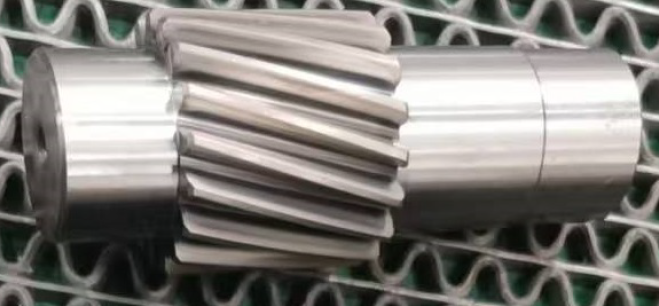Carburizing and nitriding are two widely used surface hardening techniques in metallurgy. Both enhance the surface properties of steel, but they differ significantly in process principles, application conditions, and resulting material properties.
1. Process Principles
●Carburizing:
This process involves heating low-carbon steel or alloy steel in a carbon-rich atmosphere at high temperatures. The carbon source decomposes, releasing active carbon atoms that diffuse into the steel surface, increasing its carbon content and enabling subsequent hardening.
●Nitriding:
Nitriding introduces active nitrogen atoms into the steel surface at elevated temperatures. These atoms react with alloying elements (e.g., Al, Cr, Mo) in the steel to form hard nitrides, enhancing surface hardness and wear resistance.
2. Temperature and Time
| Parameter | Carburizing | Nitriding |
| Temperature | 850°C – 950°C | 500°C – 600°C |
| Time | Several to dozens of hours | Dozens to hundreds of hours |
Note: Nitriding occurs at lower temperatures but often takes longer for equivalent surface modification.
3. Properties of the Hardened Layer
Hardness and Wear Resistance
●Carburizing: Achieves surface hardness of 58–64 HRC, offering good wear resistance.
●Nitriding: Results in surface hardness of 1000–1200 HV, generally higher than carburized surfaces, with excellent wear resistance.
Fatigue Strength
●Carburizing: Significantly improves bending and torsional fatigue strength.
●Nitriding: Also enhances fatigue strength, though generally to a lesser extent than carburizing.
Corrosion Resistance
●Carburizing: Limited corrosion resistance.
●Nitriding: Forms a dense nitride layer, providing superior corrosion resistance.
4. Suitable Materials
●Carburizing:
Best suited for low-carbon steel and low-alloy steels. Common applications include gears, shafts, and components subjected to high loads and friction.
●Nitriding:
Ideal for steels containing alloying elements such as aluminum, chromium, and molybdenum. Often used for precision tools, molds, dies, and high-wear components.
5. Process Characteristics
| Aspect |
Carburizing |
Nitriding |
| Advantages | Produces a deep hardened layer | Cost-effective
Widely applicable Low distortion** due to lower temperatures No quenching required High hardness and corrosion resistance |
| Disadvantages | High process temperatures may cause distortion
Requires quenching after carburizing |
Process complexity increases
Shallower case depth Longer cycle times Higher cost |
Summary
| Feature | Carburizing | Nitriding |
| Hardened Layer Depth | Deep | Shallow |
| Surface Hardness | Moderate to high (58–64 HRC) | Very high (1000–1200 HV) |
| Fatigue Resistance | High | Moderate to high |
| Corrosion Resistance | Low | High |
| Distortion Risk | Higher (due to high temps) | Low |
| Post-treatment | Requires quenching | No quenching needed |
| Cost | Lower | Higher |
Both carburizing and nitriding have unique advantages and are selected based on the application requirements, including load-bearing capacity, dimensional stability, wear resistance, and environmental conditions.

Nitrided Gear Shaft
Post time: May-19-2025






